Q&A: Upmanu Lall on India’s Nexus of Energy, Food and Water
Upmanu Lall discusses the intersections of energy, food and water in three regions of India where cereals are grown, despite recent droughts.
Welcome to Circle of Blue Radio’s series 5 in 15, where we’re asking global thought leaders 5 questions in 15 minutes, more or less. These are experts working in journalism, science, communication design, and water. I’m J. Carl Ganter. Today’s program is underwritten by Traverse Internet Law: tech savvy lawyers, representing internet and technology companies.
There’s a powerful nexus, some might even say a vortex, where water, energy, and food all combine. It takes energy to treat and move water; it takes water to grow food. Upmanu Lall knows these intersections well. He’s the Director of the Water Center at Columbia University and studies the wide reaching impacts of water and climate. We spoke with him recently at a meeting of the World Economic Forum’s Global Agenda Council. Thanks so much for joining us.
The next part is the water and energy linkage. In many places in the world, population densities are now high enough that locally grown food can’t be sustained via natural rain fall or natural stream flow. So people end up on being ground watered–this is a very large energy consumer. Similarly, if we are looking for drinking water at high quality–and this is a health issue obviously–then we require treatment of water: this is a major energy consumer. This is the direction in which energy influences water use. On the other side, if you look at thermal energy production–whether it is through coal fired, oil, gas or nuclear means, and now solar thermal as well–then you require a fair amount of water for cooling. That actually can be avoided if one takes air cooling methods, as are in practice now in Arizona and Southern California, but then you take an energy efficiency hit. Either way, you have to recognize that there’s an issue.
The thing that connects agriculture, or food, and water and energy together is that there’s substantial efforts in the recent times to try to do biofuel crops–corn for producing energy–so this is now a draw on both water and energy resources. And it’s probably more problematic, from a sustainability prospective, than many of the people who are supporting that kind of effort as carbon sequestration-oriented would have you believe.
So this is the nexus, these are the three things that connect, and this idea that I’ve talked about so far is fairly straightforward. Everybody appreciates it. What we don’t know is the scale of the impacts in different places and those do indeed depend on whether we are in developed countries or developing countries and what exactly are their activities–that’s where the differences would come in. And how does climate change fit into all of this? If you look forward–and what we are being told is that in the next century, in this current century, between 2050 and 2100, we may have serious impacts on society because of climate change–what is not being talked about is that, in most of the world, we will start seeing impacts of population growth and food production that will stress water sources out in a much more significant way. For example, the claim is that, in India, water sources, water supply may be as much as 40 percent below what is needed to produce the food for the country based on current population trends.
So when this kind of thing happens, when we have a shortage in one aspect of the nexus–for example in food, as you just mentioned–how does this affect the other two variables and how does it affect the people on the other side of the globe? We had a spike in food prices in the last two years, and what some people probably don’t realize is that, at least for cereals, several countries–India, Australia–decided to ban all exports. Even though they jointly account for less than 10 percent of global cereal consumption, the shock from these people not participating in international trade was such that the prices spiked. The reason for their doing that was that there were droughts in both countries. Here’s the linkage: water, food and energy. You have energy prices going up. You have a spike in food prices and an increase in global hunger. That’s the sort of concern that, broadly speaking, the nexus brings to the table. The biggest losers will be the poor people in rich countries and the poorer countries. And that brings social stability into question; that’s where we are with these.
In the 1960’s, the projection from many in the West was that India was hopeless–it was the way people talk about many parts of Africa today–that there was no chance for success. That has all changed because we think we brought the Green Revolution into India and food productivity increased dramatically. Today that situation is no longer nearly as optimistic. Again, the most productive parts of India have now plateaued out for last five or six years or may be decreasing. And productivity in other parts of the country–which probably have better water resources–it’s still marginally above 1960 values. So there’s hope, in the sense that food production could increase if those places were brought online in a proper way, but on the other hand, the current situation is not good.
Let’s start first with Punjab, because this is the heart of the Green Revolution. As I said, the productivity has stalled here. What has been happening is that the ground water tables in this area have been dropping at a rate of about 20 cm per year in the 1980’s to 1990’s, to almost a meter per year more recently. Farmers who were used to getting water at a depth of 2 to 5 meters are now going from 20 to 50 meters below surface to get water. For the farmer to make money on this, they argue that they need to have subsidies on a variety of things–primary among those is electricity for pumping. As the water levels drop, they require more subsidies. Essentially, what is happening here is they are given electricity which is not metered. Each pump has a fixed price, which is fairly nominal for the whole year, so the farmer pumps a fair amount. The key issue here is that energy consumption is substantial, and of all the electricity supplied in the state, around 30 percent is going for pumping ground water. Since ground water is falling, if this policy continues, the situation will progressively get worse. There’s no way around that. One of the reasons being speculated for the plateauing out of productivity in the agriculture industry in this region is climate change. The claim is that winter wheat is declining because of warmer temperatures at different stages during the winter season, so that’s the story there. But rice is now being multicropped, until this last year, and that’s a large water consumer, and that’s the story here. So that’s the water, energy and food nexus story for Punjab.
This sounded grim, perhaps, so let’s go to another place, which is Gujarat. In Gujarat, we don’t have rice and wheat being grown–we have vegetables being grown; we have cotton being grown; we have fodder being grown; there’s a very active dairy industry–this is a success story in that regard. So what’s happened here? The place I’ll take you to is called Mehsana. In the 1980’s, the water levels in that district ranged from 10 meters above mean sea level to 140 meters above mean sea level. However, they’ve been declining at 3 to 5 meters a year. Currently, the water levels are -80 meters to +10 meters, and the area that’s above mean sea level is 25 percent of the district, when it was all above before. So here we have a catastrophe in the making because, essentially, being next to the ocean, eventually this will all be salt. And indeed, that’s what’s been happening; they keep digging deeper because freshwater is still trapped there and salt water replaces the water at the top. This area, we can imagine, will vanish. The energy story here is that the amount of electricity used is dramatically higher than in Punjab–not as high as it would be if you grew rice, but still dramatically high. In this case, it accounts for 40 percent of all electricity consumption in that particular district. The electricity supplied for a farm of one hectare is worth 40,000 rupees, and it’s given free. Yet the income that the farmer generates, net, from that piece of land varies between 15,000 to 30,000 rupees–so you are actually spending more just on the electric subsidy. The agriculture is not exactly subsistence agriculture.
The third example is the state of Andhra. In the Andhra case, this is a hard rock aquifer and the water exists only in the fractures in the hard rock. Here what happens is rather interesting. The farmers pump water, and they decide how much area they’re going to plant based on what they see as the water level in their wells at the end of the monsoon. The crop is growing post-monsoon, and their goal is to suck out all the water in the aquifer every single year. Again, the energy expenditure is huge because pulling water from rock crevices is not exactly that easy and it’s also available only in pockets. If you get drought in a particular year now, in the past you would have been able to pump water from the hard rock aquifers for human supply and livestock supply. That opportunity is now gone because they have essentially moved to a system where the aquifers are completely exhausted every single year.
Initial interviews with farmers suggest that they actually like this idea. They are not completely sure what they would do; it depends on market conditions. The second thing is that there have been a few that do contract farming, which has made many farmers rich, but they have also been plagued by problems where contracts are not honored, depending on the market price by either side. What we are trying to do is come up with ways to improve that structure so that that will be solved. At the same time, we are facilitating the implementation of methods of growing rice without flooding the fields and this cuts the water consumption of rice by 30 to 60 percent. That’s another innovation that will help solve these kind of problems.
In summary, the reason there is a water, energy, food nexus is because if you look at any one of these things, we see that there are potential problems in one place or another, but we don’t see the collective effect. What we are seeing here is that there’s a collective effect; there’s an impact on energy production; there’s an impact on energy utilization and on the economy from both food and water and vice versa all the way through. The idea is that if you want to promote sustainable development, we need some integrated approach to managing these things. There needs to be market processes, and there needs to be public policy processes that need to be brought together.
Thank you, Professor Lall. We’ve been speaking with Upmanu Lall, Professor at Columbia University and Director of the Water Center. To learn more about his work and other projects, be sure to tune in to Circle of Blue online at 99.198.125.162/~circl731.
Our theme is composed by Nedev Kahn, and Circle of Blue Radio is underwritten by Traverse Legal, PLC, internet attorneys specializing in trademark infringement litigation, copyright infringement litigation, patent litigation and patent prosecution. Join us again for Circle of Blue Radio’s 5 in 15. I’m J. Carl Ganter.
is a Traverse City-based assistant editor for Circle of Blue. She specializes in data visualization.
Interests: Latin America, Social Media, Science, Health, Indigenous Peoples

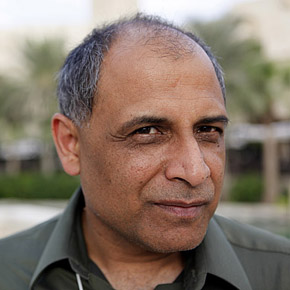

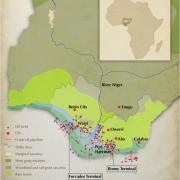
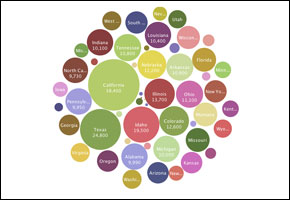
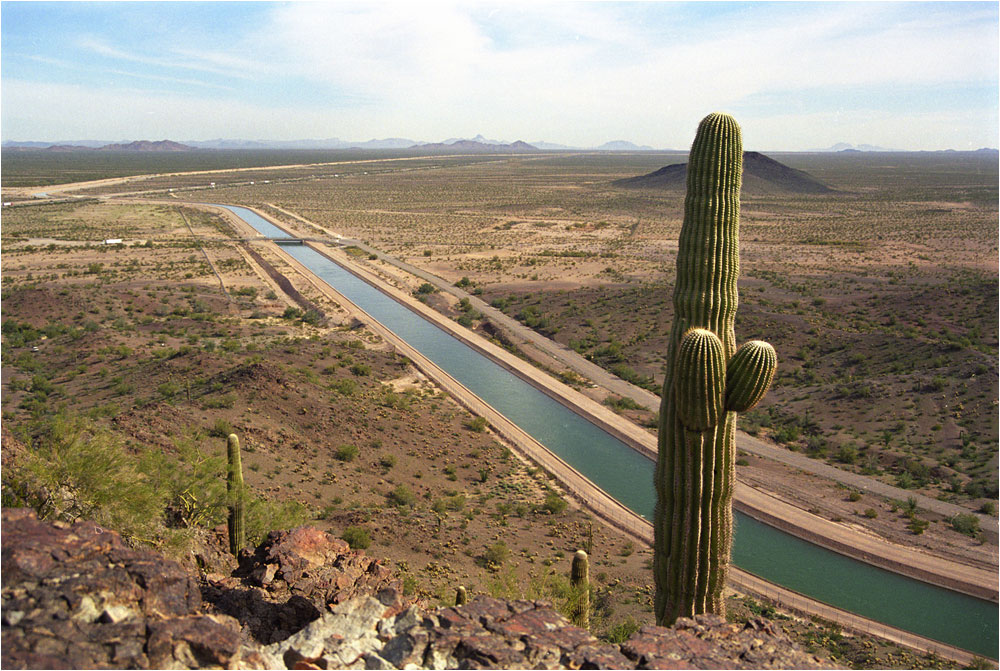


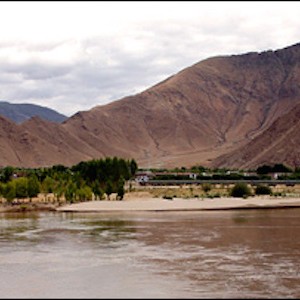
Comments are closed.